Understanding ROI
What is ROI in Digital Marketing?
Return on Investment (ROI) in digital marketing is a vital metric used to evaluate the profitability of marketing efforts. It represents the profit earned for every dollar spent, calculated using the formula: (Revenue from marketing efforts – Cost of marketing) / Cost of marketing * 100. A positive ROI indicates successful campaigns, while a negative ROI suggests the need for reevaluation.
The Importance of ROI for Businesses
Measuring ROI is crucial as it quantifies campaign success in financial terms, allowing businesses to identify effective strategies. For instance, a marketing strategy with a 5:1 ROI ratio signifies earning $5 for every $1 spent, making it a strong benchmark for success. “ROI ensures marketing efforts are not only creative but financially viable,” says industry expert Jane Doe.
Key Factors Influencing ROI
Several key factors impact ROI, including budget, targeting, and messaging. A well-planned budget ensures costs are controlled. Effective targeting reaches the right audience, enhancing engagement and conversions. Clear and appealing messaging improves conversion rates, driving higher ROI. Understanding and optimizing these factors can significantly improve digital marketing outcomes.
Setting Clear Goals
In digital marketing, aligning marketing goals with business objectives is crucial for maximizing ROI. This alignment not only provides clarity but also ensures that marketing efforts contribute directly to broader business success.
Tips for Prioritizing Marketing Goals:
- Understand Company Performance: Review how your company is currently performing and align initiatives with your growth trajectory.
- Ensure Right Resources: Verify that the right talent and tools are available to support marketing initiatives effectively.
- Make Unbiased Decisions: Use data-driven insights to prioritize initiatives that lead to measurable improvements.
- Focus on Strategy Over Capacity: Prioritize initiatives that align with strategic goals rather than overextending resources.
| Goal Type | Description |
|---|---|
| Short-term Goals | Increasing sales by a certain percentage in a few months. |
| Long-term Goals | Launching new products over a couple of years. |
Examples of Achievable Goals:
- Increase Brand Awareness through social media and engaging content.
- Boost Brand Engagement by regularly updating content and interacting with followers.
By setting clear and realistic goals, businesses can effectively measure success and drive a positive ROI.
Key Metrics to Track
In the journey to maximize ROI in digital marketing, understanding and tracking essential metrics is fundamental. These metrics provide insights into the effectiveness of marketing strategies and help in making data-driven decisions.
Conversions: The Ultimate Goal
Conversion rates indicate the success of turning site visitors into customers. They serve as a direct measure of your campaign’s effectiveness. Boosting conversion rates can significantly enhance ROI.
Cost Per Acquisition (CPA): Efficiency Measure
CPA helps evaluate the cost-effectiveness of your marketing efforts by calculating the total marketing expenses divided by the number of sales generated. Lower CPA indicates more efficient spending.
Customer Lifetime Value (CLV): Long-Term Impact
CLV estimates the total revenue a customer will generate over their lifetime. It’s crucial for understanding the long-term value of acquiring new customers and justifying initial marketing costs.
Return on Ad Spend (ROAS): Performance Indicator
ROAS measures the revenue generated for every dollar spent on advertising. A high ROAS is indicative of a successful paid campaign.
To effectively track these metrics, leverage tools like Google Analytics and Ruler Analytics. These tools offer comprehensive insights into customer journeys and marketing touchpoints.
“Harnessing the power of data analytics transforms raw data into actionable insights, driving strategic decisions and maximizing ROI.”
Ultimately, data analysis plays a pivotal role in shaping marketing strategies, allowing businesses to refine tactics and allocate resources more effectively.
Optimizing Campaigns
Optimizing digital marketing campaigns is essential for maximizing ROI. By leveraging data insights, implementing A/B testing, and utilizing retargeting strategies, businesses can significantly enhance their campaign effectiveness.
- Leveraging data insights for better targeting: Use tools like Google Analytics to analyze demographic data and behavior patterns. This helps create detailed customer personas, allowing marketers to tailor messages and campaigns more effectively. For instance, a retail brand increased conversions by 30% by personalizing ads based on user preferences.
- Importance of A/B testing for ad copy and creative: A/B testing allows marketers to experiment with different headlines, images, and CTAs. According to Directive Consulting, optimizing ad elements through A/B testing can lead to higher click-through rates and improved ROI without increasing ad spend.
- Utilizing retargeting for increased conversions: Retargeting specific URL visits or re-engaging existing customers can boost conversion rates. A study showed that businesses using tailored retargeting ads saw a 20% increase in sales.
Statistics: Businesses that implement data-driven strategies see an average increase of 20-30% in conversion rates, proving the power of optimization techniques.
By integrating these strategies, businesses can refine their campaigns and drive sustainable growth.
Continuous Monitoring
Importance of Ongoing Analysis and Adjustments
Continuous monitoring and analysis of marketing campaigns are crucial for improving ROI. Analytics provide insights into customer needs and behaviors, guiding marketing strategies effectively. It’s essential to gather data from all platforms to get a comprehensive view of customer journeys and prevent budget waste on isolated tactics.
Staying Updated on Industry Trends and Techniques
Keeping up with the latest digital marketing trends is key to maintaining a competitive edge. Engaging with industry experts and utilizing resources like free video lessons can provide valuable insights and updates. As technology impacts marketing dynamics, staying informed helps businesses adapt and thrive.
Investing in Employee Training for Skill Enhancement
Investing in employee training ensures that teams are equipped with the necessary skills to navigate the ever-evolving digital marketing landscape. Online courses, certifications, and mentorship programs are effective strategies to enhance knowledge. Statistics show that companies with continuous training programs see a 24% higher profit margin. “Continuous learning is the key to sustained success,” making it vital to foster a culture of ongoing development.
FAQs on ROI
What is the business case for calculating ROI?
- Calculating ROI helps businesses understand the effectiveness of their marketing efforts in different contexts, such as during a commercial reorganization. This insight aids in making informed decisions on budget allocation and strategy adjustments. Learn more about calculating ROI.
How often should ROI be measured?
- The frequency of measuring ROI is crucial. It involves balancing immediate sales impacts with long-term benefits. Regular assessments can guide timely adjustments in strategy.
Which metrics are essential for tracking ROI?
- Key metrics include conversions, customer acquisition cost (CAC), and return on ad spend (ROAS). These metrics provide insights into campaign efficiency and effectiveness.
What tools can help in measuring ROI?
- Utilizing tools like Funnel and Google Analytics can help consolidate data and provide a comprehensive view of marketing performance.
How can businesses improve their ROI?
- To enhance ROI, set SMART goals, focus on high-performing channels, and leverage marketing automation. Regularly analyze and optimize strategies based on data insights. Discover more best practices here.



